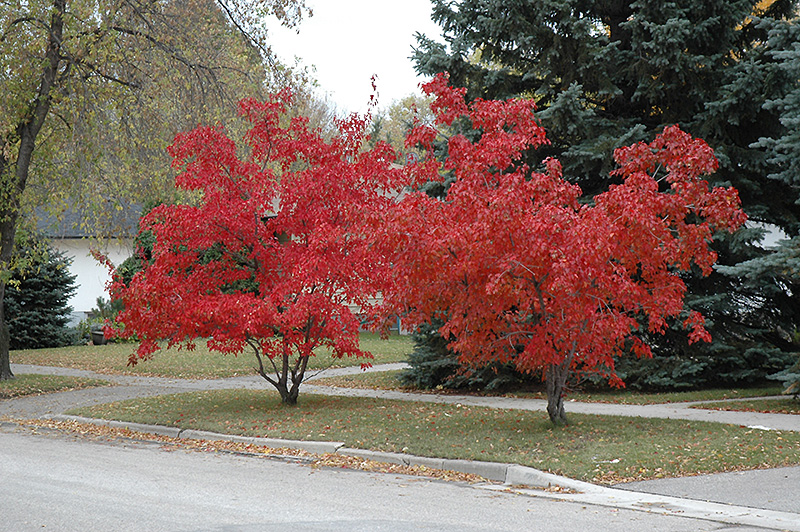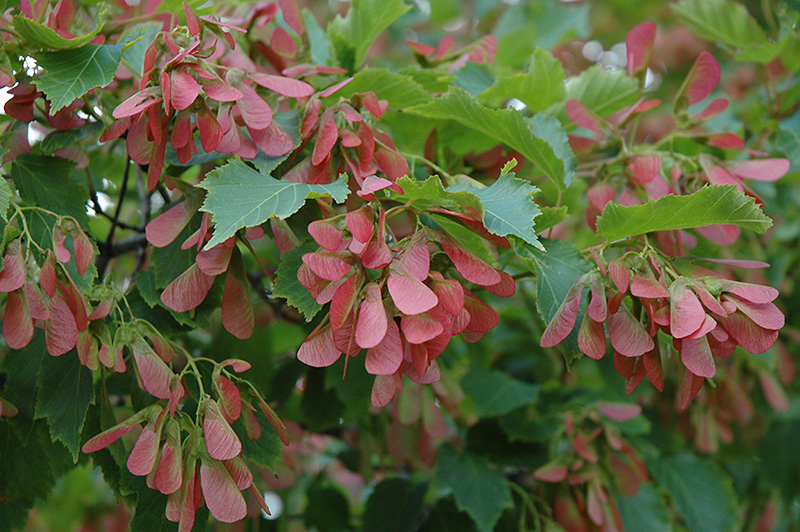Height: 20 feet
Spread: 20 feet
Sunlight:
![]()
![]()
Hardiness Zone: 2a
Other Names: Ginnala, Flame, Amur
Description:
A spectacular choice for its reliable blazing red fall color is a shapely small tree; very hardy and adaptable, great as a fall accent in smaller home landscapes. Excellent for smaller locations.
Ornamental Features
Flame Amur Maple is primarily grown for its highly ornamental fruit. It features abundant showy scarlet samaras in late summer. It has dark green deciduous foliage. The lobed leaves turn outstanding shades of scarlet and in the fall.
Landscape Attributes
Flame Amur Maple is a multi-stemmed deciduous tree with a more or less rounded form. Its relatively fine texture sets it apart from other landscape plants with less refined foliage.
This is a relatively low maintenance tree, and is best pruned in late winter once the threat of extreme cold has passed. It is a good choice for attracting birds to your yard, but is not particularly attractive to deer who tend to leave it alone in favor of tastier treats. Gardeners should be aware of the following characteristic(s) that may warrant special consideration;
- Self-Seeding
Flame Amur Maple is recommended for the following landscape applications;
- Accent
- Mass Planting
- Hedges/Screening
- Rock/Alpine Gardens
Planting & Growing
Flame Amur Maple will grow to be about 20 feet tall at maturity, with a spread of 20 feet. It has a low canopy with a typical clearance of 4 feet from the ground, and is suitable for planting under power lines. It grows at a slow rate, and under ideal conditions can be expected to live for 60 years or more.
This tree does best in full sun to partial shade. It prefers to grow in average to dry locations, and dislikes excessive moisture. It is not particular as to soil type or pH. It is highly tolerant of urban pollution and will even thrive in inner city environments. This is a selection of a species native to parts of our region.


